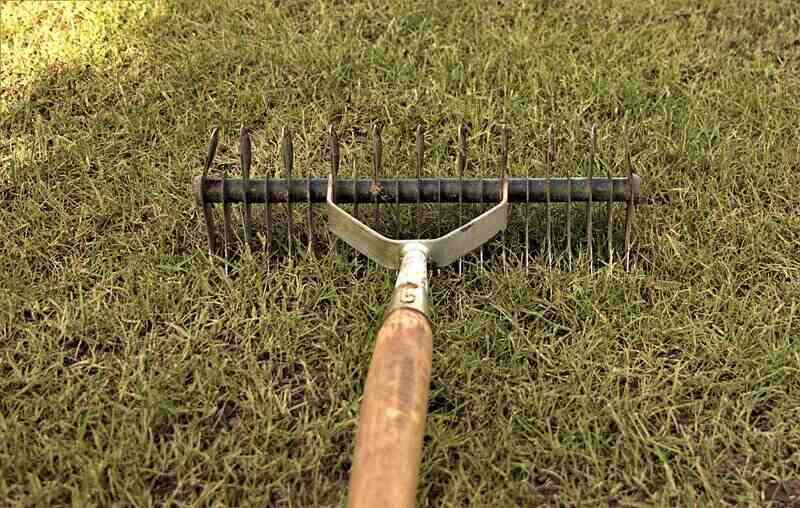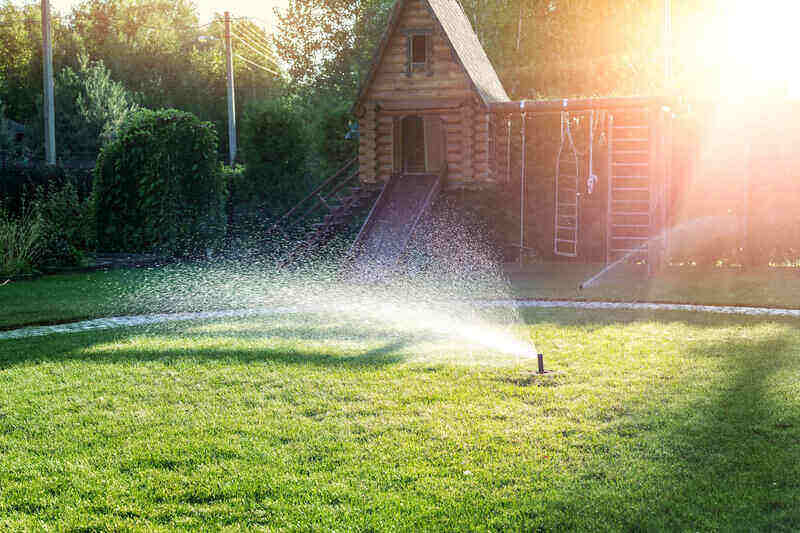
A lush, healthy lawn is the pride of any homeowner, but achieving that vibrant green can sometimes be a challenge. Your lawn needs lime to restore the soil’s pH balance, but you must know why, when, and how to apply lime to your lawn for it to be effective.
Whether you’re a seasoned lawn enthusiast or just starting your journey to a healthier turf, understanding the benefits, timing, application methods, and different types of lime can be the key to a flourishing, green lawn you can enjoy year-round.
Why, when, and how to apply lime to your lawn
A natural soil amendment, lime comes in the form of finely ground limestone or dolomite that’s rich in calcium and magnesium. You can add lime to help balance your lawn’s soil acidity. It’s not a fertilizer but rather a soil conditioner.
When applied correctly, lime helps neutralize acidic soil – making it less acidic and more alkaline. This adjustment in soil pH creates a healthier environment for your grass to thrive, as it allows essential nutrients to become more accessible to your lawn’s roots.
Why add lime to your lawn
Lime is like a helper for your lawn, and here’s why you should use it:
- Balances soil pH: Soil can be too acidic, which makes it hard for grass to grow. Lime helps fix this by making the soil less acidic and more balanced. When the pH of the soil is just right, your grass can absorb nutrients better.
- Nutrient accessibility: Lime makes the soil friendlier to important nutrients like nitrogen, phosphorus, and potassium. This means your grass gets the food it needs to grow strong and green.
- Prevents moss and weeds: Moss and weeds like acidic soil, but lime makes it less inviting for them. When you use lime, you’re helping your grass to outcompete these unwanted guests.
- Enhances root growth: Healthy soil with the right pH encourages your grass roots to grow deeper. This makes your lawn more resistant to drought and helps it stay green in hot weather.
Turfgrass grows best with a soil pH level that is slightly acidic to neutral (pH range of 6.0 to 7.0). Although, the ideal pH level can fluctuate with various grass and soil types. Lawns that could benefit from lime products generally have a pH below 6.0, which means the soil is too acidic.
Here’s why that’s a problem: When soil is too acidic, the roots struggle to uptake available nutrients. So, no matter how much fertilizer you apply to the lawn, the acidic soil will hinder nutrient absorption. As a result, your turfgrass may weaken – making it susceptible to the following ailments:
- Wilting grass blades
- Yellow spots on your lawn
- Lawn disease
- Vulnerability to pests
- Increase in lawn weeds
- Increase in lawn moss
When to add lime to your lawn
Timing is important when it comes to adding lime to your lawn. Here’s when you should do it:
- Early spring or fall: Lime works best when the grass is actively growing, so these seasons are perfect. Although, it’s better to lime your lawn during fall as it allows the lime more time to break down into the soil.
- Avoid extreme heat: Liming your lawn during the hot summer months can stress your grass. Also, don’t do it too close to when you fertilize, as they can interfere with each other.
- Every two to three years: Most lawns benefit from a lime application every two to three years. But follow your soil test results for the best guidance on frequency.
Remember to follow these timing guidelines to get the most out of your lime application and keep your lawn healthy and green.
Also, lime should not be applied under the following conditions:
- The weather forecast indicates rain
- Your lawn is wet
- Your turfgrass is wilted
- Your grass is dormant
- Your lawn is stressed or facing adverse challenges (i.e., nutrient imbalance) affecting its health and ability to grow optimally.
How to apply lime to your lawn
Applying lime is a simple way to improve your lawn’s health and help it grow lush and green. There are several steps to take to achieve the best results from a lime application.
Step 1: Test your soil

Before anything else, it’s a good idea to test your soil. You can do this with a simple testing kit you can get from your local garden center or by sending a sample to a lab. This soil test will tell you if your soil is too acidic and how much lime it needs.
If you play a guessing game with your soil and skip the soil test, you risk applying too much or too little lime. Applying too much lime can cause the soil to become too alkaline.
How to test: You can submit a soil sample to your local county extension office.
Step 2: Aerate and dethatch

It’s best to aerate and dethatch your lawn before applying lime.
- An aeration service will remove plugs of soil from the ground, creating pockets of breathing room for the soil and allowing the lime to more easily reach the soil.
- On the other hand, dethatching helps remove excess thatch, which is a layer of dead grass, roots, and organic matter that accumulates on the soil surface, potentially hindering water and nutrient absorption by the grass roots. Removing thatch buildup can make liming more effective and improve grass growth.
Pro tip: Dethatch before you aerate. For warm-season grasses, aerate and dethatch your lawn in late spring and follow up with a fall lime treatment. Cool-season grasses can be aerated and dethatched in the fall, so the timing of your lime application can coincide with these treatments.
Step 3: Calculate how much lime you need
Carefully review your soil test to see the recommended amount of lime for your lawn. You may need to calculate how much lime you need according to your lawn’s size.
For lime applications that require more than 50 pounds per 1,000 square feet, it’s not recommended to apply it all at once. You will need to split the applications into two treatments: apply the first half in spring and the second half in fall.
Step 4: Apply the lime
For pelletized lime, use a drop spreader or a broadcast spreader to apply it. Apply the first half going in one direction and apply the remaining half going in the opposite direction to create a criss-cross pattern. The criss-cross pattern helps achieve uniform coverage.
For liquid lime, attach the sprayer to your hose and spray in a side-to-side pattern, ensuring even coverage. You must follow the instructions on the packaging carefully.
Step 5: Water your lawn

Give your lawn some water after applying pelletized lime. Water will help the lime soak into the ground and prevent it from sticking to the grass blades. If applying liquid lime, refer to the package’s instructions, as you may need to wait a few hours before you can water the lawn.
Note: Lime takes some time to work, so be patient. Seeing the full benefits may take a few weeks or even months. Depending on your soil test and the type of lime used, you may need to reapply every two to three years or as recommended in your soil test results.
Variations of lime
When shopping for lime, you will discover that there are different forms and types of lime.
Types of lime
The two types of lime are:
- Calcitic lime: Made from calcium carbonate, calcitic lime can be used on clay soils with a magnesium percentage greater than 20%.
- Dolomitic lime: It’s also made from calcium carbonate but contains magnesium carbonate. Dolomitic lime is best for sandy soils.
Forms of lime
Liquid lime and pelletized lime are common forms of lime that are available. Here are the pros and cons of each:
| Liquid lime | Pelletized lime |
| ✓ Faster soil reaction than pelletized lime | ✗ Has a slower soil reaction than liquid lime |
| ✗ Typically more expensive | ✓ Typically more affordable |
| ✓ Can be connected to a hose (You’re probably more likely to have a hose lying around than a rotary spreader) | ✗ You will need to use a spreader to apply lime to your lawn, which may be an additional cost for some users |
| ✗ Not as readily available | ✓ Commonly found in the garden section of home improvement stores |
FAQ about why, when, and how to apply lime to your lawn
Do I need to lime my lawn every year?
It depends. After you’ve applied lime to your lawn, conduct a soil test the following year to determine whether the soil has reached the desired pH level. If the soil is still too acidic, you’ll need to perform another lime application. Once the ideal pH level has been reached, you can stop applying lime and resume soil testing every three to five years.
Is lime safe on my lawn if I have kids and pets?
Yes, but keep your kids and pets off the lawn while you’re applying the lime. Also, allow the lime to absorb into your lawn – around 24 to 48 hours after watering – before resuming activity.
What causes fluctuation in soil pH?
Fluctuation in the pH of a lawn can be caused by several factors, such as:
- Repeated fertilization over a long period of time
- Heavy rainfall leaching nutrients from the soil
- Decomposing organic matter
- Animal waste
Rely on a professional for proper lawn care
Lime can make a big difference in your lawn’s quality and beauty, but only if you use it wisely and appropriately. Remember to do regular soil testing and adjust your lime application accordingly.
With proper TLC and maintenance, you can enjoy a lush, green lawn year-round. And, if you need help with mowing and other lawn maintenance tasks, don’t hesitate to call a lawn care pro today.
Main Image Credit: The Toidi | Shutterstock